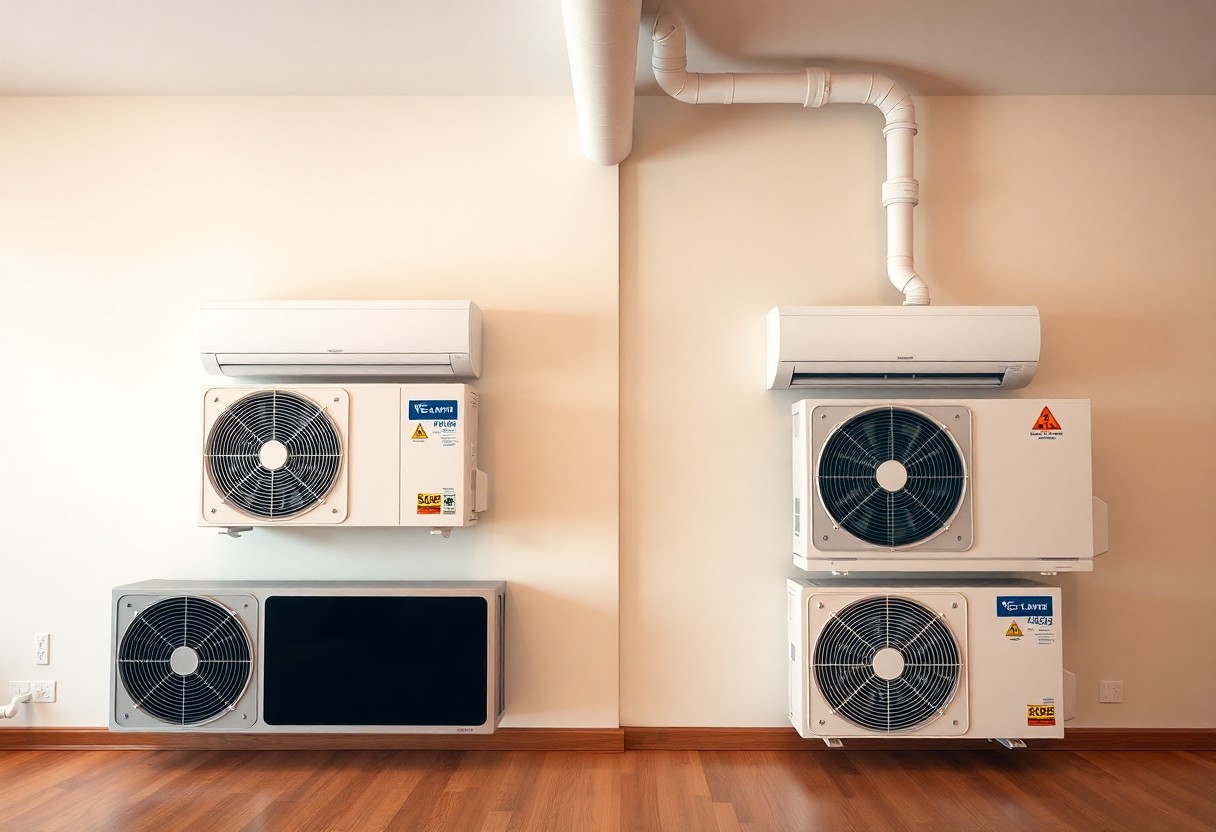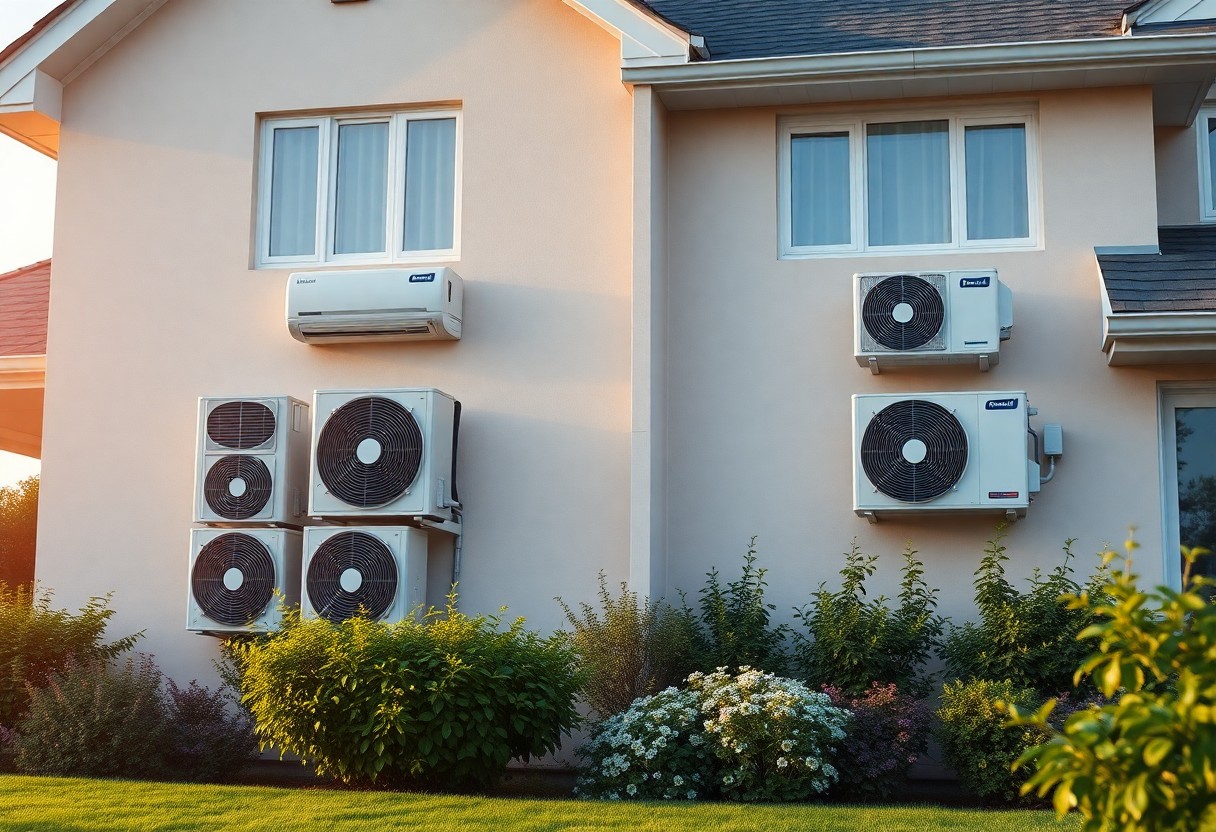With soaring temperatures and humidity levels, understanding Brisbane's largest air conditioning system is important for you as a resident. This incredible installation not only showcases cutting-edge technology but also addresses the growing demand for efficient cooling solutions in your city. Join us as we explore the scale, features, and benefits of the system that keeps your environment comfortable, illustrating how it plays a vital role in Brisbane's infrastructure and your quality of life.
Key Takeaways:
- Brisbane's largest air conditioning system is designed for efficiency and sustainability.
- The installation is located in a central commercial building, enhancing urban climate control.
- Advanced technology and smart controls optimize energy consumption.
- The project has a significant impact on reducing the carbon footprint in the area.
- Collaboration between local authorities and private sector plays a key role in project success.

Overview of Brisbane's AC Market
Brisbane's air conditioning market showcases a dynamic landscape tailored to meet the demands of a subtropical climate. With soaring temperatures in summer, residential and commercial sectors recognize the importance of reliable cooling solutions. The city has seen a significant uptick in both split and ducted systems, driven by rising energy efficiency standards and consumer preferences for smart technology integration.
Current Trends in Air Conditioning
Energy efficiency is dominating the air conditioning landscape in Brisbane. Consumers increasingly opt for inverter technology that adjusts output based on cooling needs, significantly reducing energy consumption. Smart technology, including remote access through mobile apps, enables users to control their systems seamlessly, enhancing convenience and efficiency.
Key Players in the Industry
Several major players in Brisbane's air conditioning market drive innovation and competition. Industry leaders such as Daikin, Mitsubishi Electric, and ActronAir offer advanced climate control solutions tailored for the region's specific requirements, pushing the boundaries of performance and sustainability.
Companies like Daikin lead the pack, recognized for their cutting-edge technologies and extensive product range. Mitsubishi Electric also contributes robustly, focusing on energy efficiency and reliability for both residential and commercial systems. Local manufacturers such as ActronAir incorporate Australian conditions into their designs, providing products that perform optimally in Brisbane's climate. These key players not only offer comprehensive service networks but also invest heavily in research and development to anticipate market trends and consumer needs.
Specifications of the Largest AC Installation
This installation stands out with its impressive specifications designed to handle the demands of Brisbane's climate. The system operates at a capacity of 1,200 kW, effectively cooling a space of over 15,000 square meters. Efficiency ratings are high, offering both energy savings and optimal performance, ensuring comfort throughout the year.
System Capacity and Features
The system's capacity ensures it meets the cooling needs of large commercial spaces, with features including multi-zone temperature control and real-time monitoring capabilities. Additionally, the installation incorporates smart technology, allowing for remote access and customizable settings to maximize energy efficiency and comfort.
Technology Used
Advanced technology underpins this AC system, including variable refrigerant flow (VRF) systems and integrated smart controls. These innovations enhance operational efficiency while reducing energy consumption, making it a standout choice for sustainable cooling solutions.
VRF systems allow for simultaneous heating and cooling in different zones, tailoring the environment to your needs while optimizing energy use. Smart controls incorporate IoT technology, enabling predictive maintenance and performance analytics, which reduces downtime and enhances system longevity. This combination of cutting-edge technology ensures not only comfort but also significant reductions in operational costs.
Installation Process
The installation of Brisbane's largest AC system was a meticulously planned operation, executed in several phases to ensure precision and efficiency. Involving a specialized team, the project integrated complex logistics and cutting-edge technology to enhance overall performance while minimizing disruption to the surrounding environment.
Planning and Design
In the planning and design phase, extensive assessments of the site's requirements were conducted, considering factors like building layout, airflow patterns, and energy efficiency. By leveraging advanced design software, the team created tailored blueprints, ensuring capacity calculations aligned with the unique needs of the facility, ultimately guiding the installation process effectively.
Implementation and Challenges
The implementation phase faced several challenges, including limited access to certain areas of the site and the need for precise calibration of the equipment. Weather conditions also posed a significant factor, with heavy rains delaying some outdoor components. The team utilized advanced tools to adapt to these challenges, ensuring that timelines remained intact while achieving optimal installation quality.
During implementation, working at heights and maneuvering heavy machinery in constrained spaces added layers of complexity. The team employed hydraulic lifts and customized rigging methods to ensure safety and efficiency. Real-time problem-solving was crucial as unforeseen structural issues arose, requiring rapid adjustments to maintain the project schedule. Overall, the cohesive collaboration among team members resulted in a successful installation, despite these obstacles, showcasing their expertise and commitment to quality service.

Impact on Energy Efficiency
The installation of Brisbane's largest AC system is set to revolutionize energy efficiency across the region. Advanced technology incorporated into this system allows for optimized performance, reducing energy consumption while maintaining optimal comfort levels. By integrating smart controls and sensors, you can expect significant reductions in energy usage compared to older models, resulting in a more sustainable and efficient operation.
Environmental Benefits
Transitioning to this state-of-the-art AC system minimizes your carbon footprint significantly. With lower energy consumption leading to reduced greenhouse gas emissions, businesses can take pride in contributing to environmental sustainability. Enhanced efficiency not only conserves resources but also promotes a greener Brisbane, benefiting the entire community.
Cost Savings for Businesses
Implementing Brisbane's largest AC system leads to substantial cost savings for businesses. The combination of energy efficiency and reduced maintenance needs results in lower utility bills over time. As energy costs continue to rise, investing in this system reflects a proactive approach to managing expenses while enhancing the working environment.
For many businesses, the financial implications of energy efficiency can be transformative. By investing in the largest AC installation, you may achieve a reduction in energy costs by up to 30%, depending on usage patterns and operational hours. Additionally, fewer breakdowns and maintenance needs contribute to a streamlined operation, allowing you to allocate resources more effectively. Long-term savings can also bolster your bottom line, positioning your business as competitive and environmentally responsible.
Future Developments in AC Technology
The landscape of air conditioning technology is rapidly evolving, with innovations aimed at improving energy efficiency, environmental impact, and overall performance. As climate concerns grow, the trend is shifting toward renewable energy sources, smart systems that adapt to user preferences, and the integration of advanced materials for better thermal management. You can expect systems that not only cool spaces more effectively but also contribute positively to the environment.
Innovations on the Horizon
Next-generation air conditioning units will feature AI-driven controls that seamlessly adapt to your habits and preferences. Enhanced filtration technologies will improve indoor air quality, while systems using solar power and other green technologies promise to reduce carbon footprints significantly. You'll benefit from lower energy bills and healthier environments as these advancements become mainstream.
Potential Upgrades for Brisbane
Brisbane's existing AC infrastructure can significantly benefit from advancements in zoning technology and smart thermostats. These systems allow for personalized climate control in different areas of your home or building, ensuring energy is used efficiently. Moreover, retrofitting existing units with modern, eco-friendly refrigerants could decrease operational costs while aligning with sustainability goals.
Upgrading Brisbane's AC systems to incorporate advanced zoning technology would allow you more control over individual room temperatures, enhancing comfort and reducing energy wastage. Implementing smart thermostats could also connect to your existing home automation systems, enabling you to manage your climate remotely. Coupling these upgrades with newer, environmentally friendly refrigerants can lower your energy consumption significantly and reduce your environmental impact. This approach not only sharpens efficiency but positions Brisbane as a leader in smart, sustainable living. By investing in these upgrades, you're set to enjoy a cooler home and a lower carbon footprint.
Customer Testimonials
Your satisfaction speaks volumes about our commitment to excellence. Clients rave about their experiences with Brisbane's largest AC installation, praising the efficiency and cooling capacity that transformed their spaces. They highlight how a partnership with Lawson Air: Air Conditioning Installation Brisbane & Sydney ... has significantly enhanced their comfort in the subtropical climate.
User Experiences
Performance Reviews
Performance reviews of the system consistently highlight its energy efficiency and effectiveness. The dual-zone capabilities enable optimal temperature control across varying spaces, delivering significant energy savings during peak usage times.
The intricate design and innovative technology behind Brisbane's largest AC system have led to impressive performance metrics. Users have reported a 30% reduction in energy costs compared to previous systems, while sensors manage humidity levels for enhanced comfort. Real-time feedback shows that maintaining desired temperatures is achieved with minimal fluctuations, ensuring a consistently comfortable environment.
Summing up
Drawing together the details of Brisbane's largest AC system, you can appreciate the significant impact it has on your city's comfort and energy efficiency. This extensive installation not only enhances air quality but also represents a leap towards innovative cooling solutions, ensuring that your environment remains pleasant during the warmer months. Understanding the scale and benefits of this system empowers you to make informed choices about climate control in your own space.
FAQ
Q: What is Brisbane's largest AC system?
A: Brisbane's largest AC system is a cutting-edge installation that utilizes advanced technology to provide efficient climate control for large commercial spaces, ensuring optimal comfort for occupants throughout the year.
Q: Where is the largest AC system located in Brisbane?
A: The largest AC system is installed at a major commercial facility in the heart of Brisbane, designed to service multiple floors and extensive operational areas.
Q: What are the benefits of this large-scale AC installation?
A: This installation offers enhanced energy efficiency, reduced operational costs, improved air quality, and better temperature regulation compared to traditional systems.
Q: How does the AC system handle Brisbane's climate conditions?
A: The AC system is engineered to adapt to Brisbane's hot and humid climate, utilizing variable refrigerant flow technology to maintain comfort while minimizing energy consumption.
Q: What maintenance is required for Brisbane's largest AC system?
A: Regular maintenance includes filter replacements, system checks, and efficiency assessments to ensure optimal performance and longevity of the installation.





